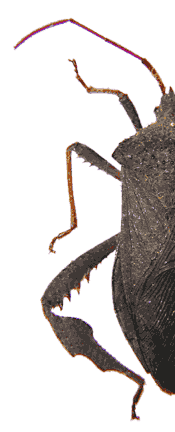 Hoppers evolve resistance
Hoppers evolve resistance
Here's a quick recap of the summer:
In the beginning of the summer there were a lot of hoppers and only 20% of them were immune to Hopper-B-Gone. After the first spray, there were very few hoppers. However, the hoppers recovered and you sprayed again. This time fewer were killed. By the end of the summer there were a lot of hoppers, and most of them were immune to Hopper-B-Gone.
What's going on here? At the beginning of the summer, Hopper-B-Gone worked, and by the end of the summer it didn't. The friendly neighborhood pesticide salesman insists that Hopper-B-Gone hasn't changed. The zucchini environment hasn't changed. It must be that the hoppers themselves changed.
Another word for changed is ... evolved. The zucchini hoppers have evolved to be immune to the pesticide.
Evolution follows directly, inevitably, from certain characteristics of the situation. We'll talk about why this happened in the next few screens. I want to emphasize from the start that although zucchini hoppers and Hopper-B-Gone are make-believe, the process that we are talking about IS NOT made up. Scientists can observe and measure evolution in a wide variety of pest species, although it may take a few years rather than a few months.
So, what are the key conditions that allowed evolution to take place here? In fact there are 3:
On the next pages, we'll go through them one by one...
Copyright University of Maryland, 2007
You may link to this site for educational purposes.
Please do not copy without permission
requests/questions/feedback email: mathbench@umd.edu